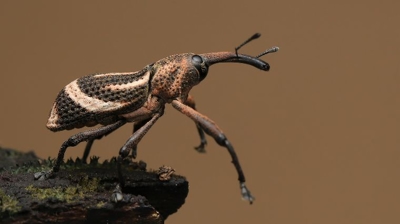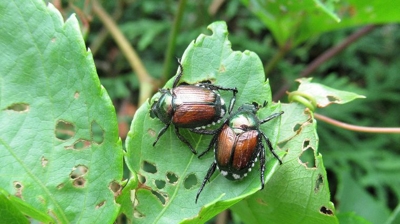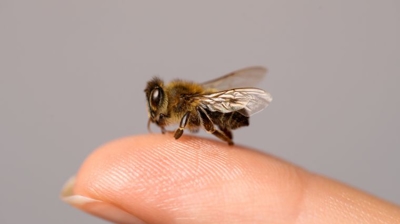
What Are Carolina Wolf Spiders?
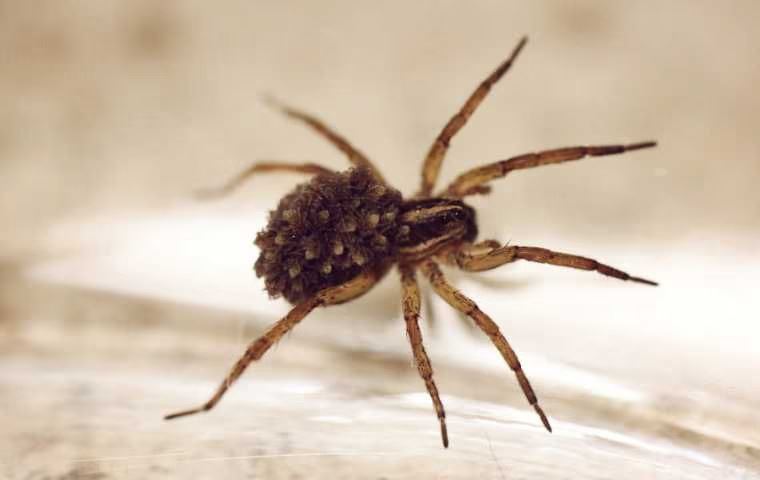
Carolina wolf spiders, scientifically known as Hogna carolinensis, are a species of wolf spider found primarily in the southeastern United States, including the Carolinas, Georgia, Florida, and parts of neighboring states. These spiders belong to the Lycosidae family, which is known for its agile hunting behavior and wolf-like appearance.
Carolina wolf spiders are among the largest of their family, with females typically reaching sizes of up to 1.5 inches (3.8 cm) in body length, while males are smaller. They exhibit sexual dimorphism, with females being bulkier and more robust than males. These spiders have a somewhat flattened, brownish-gray or dark brown body with distinctive patterns on their abdomen, consisting of lighter and darker bands and spots. Their large, forward-facing eyes make them excellent hunters, as they rely on keen eyesight to track and capture prey.
Carolina wolf spiders are primarily ground-dwelling predators and are often found in grasslands, woodlands, and around human habitation. They do not spin webs to catch their prey but instead actively stalk and hunt for insects, small arthropods, and other invertebrates. These spiders are fast runners and employ stealth to catch their prey, using a combination of ambush tactics and pursuit.
Reproduction in Carolina wolf spiders is an interesting process. Males perform a courtship ritual to approach females cautiously, often with some drumming or vibrational communication. Once mating occurs, females carry their egg sacs, attached to their spinnerets, and guard them until the spiderlings hatch. They are known for their maternal care, carrying the young spiderlings on their abdomen, providing protection, and sometimes even food.
Carolina wolf spiders play a beneficial role in their ecosystem by helping to control insect populations, and they are generally not aggressive towards humans. While their size and appearance might be intimidating, they are rarely a threat to people and will typically only bite if they feel cornered or threatened. The venom of Carolina wolf spiders is not considered medically significant to humans and usually causes only mild, localized pain and swelling.
Carolina wolf spiders are a fascinating species of wolf spider known for their large size, distinctive markings, agile hunting behavior, and maternal care. They are valuable members of their ecosystems, contributing to pest control while posing little danger to humans.
What Do Carolina Wolf Spiders Look Like?
Carolina wolf spiders (Hogna carolinensis) are notable for their distinctive appearance. These spiders exhibit sexual dimorphism, with females being larger and more robust than males. Here's a detailed description of their physical characteristics:
- Size: Carolina wolf spiders are among the larger members of their family, with females typically reaching sizes of up to 1.5 inches (3.8 cm) in body length. Males are smaller, as is common in many spider species.
- Color: They have a somewhat flattened body, which is typically brownish-gray to dark brown. The exact shade may vary among individuals and can range from light to dark brown.
- Markings: One of the most distinctive features of Carolina wolf spiders is the pattern on their abdomen. Their abdomen often features a series of lighter and darker bands, spots, or marbled patterns. These markings can vary between individuals, providing some degree of variation in their appearance.
- Eye Arrangement: Carolina wolf spiders have large, forward-facing eyes arranged in a characteristic pattern. The arrangement of their eight eyes is known as a "diagonal row" in which four small eyes are located in the bottom row, followed by two larger eyes in the middle, and then two more small eyes on top.
- Leg Structure: Their legs are typically covered with fine hairs and are well-suited for running and capturing prey. They are agile and fast-moving spiders.
- Pedipalps: In males, the pedipalps, a pair of appendages near the front of the body, are often used in mating and are noticeably different from the pedipalps of females.
Carolina wolf spiders may appear intimidating due to their size and markings, but they are not aggressive toward humans and are rarely a threat. They are primarily ground-dwelling predators and use their keen eyesight and speed to hunt for prey, relying on stalking and ambush tactics. These spiders can be found in a variety of habitats, including grasslands, woodlands, and areas near human dwellings. While their appearance might be imposing, their venom is not considered medically significant to humans, and they generally only bite if they feel threatened.
Carolina wolf spiders are characterized by their brownish-gray to dark brown coloration, distinct abdominal markings, large forward-facing eyes, and an agile build that helps them with hunting and survival in their natural habitat.
Where Are Carolina Wolf Spiders Found?
Carolina wolf spiders (Hogna carolinensis) are primarily found in the southeastern United States, particularly in regions that offer suitable habitats for their hunting and reproduction. Here are some of the types of environments where you might find Carolina wolf spiders:
- Coastal Areas: Carolina wolf spiders are commonly found in coastal regions, including the Carolinas, Georgia, Florida, and parts of neighboring states. They are well adapted to the diverse ecosystems along the coast, which provide a mix of sandy dunes, grassy areas, and woodlands.
- Sand Dunes: These spiders are often associated with sandy habitats, such as sand dunes and beach areas, where they burrow in the sand for shelter. The loose, well-drained soil is conducive to their burrowing behavior.
- Grassy and Wooded Areas: Carolina wolf spiders can also be found in grasslands, meadows, and woodlands. They use these habitats for hunting and shelter. Their ability to move quickly and their camouflage make them well-suited to these environments.
- Gardens and Urban Areas: In some cases, Carolina wolf spiders can be found in gardens, lawns, and other urban or suburban areas, as long as there is suitable ground cover and an adequate supply of prey for them to feed on.
- Near Human Dwellings: These spiders are sometimes spotted near human habitations, such as homes, garages, and sheds. They may take advantage of these environments for shelter and as a hunting ground.
When searching for Carolina wolf spiders, look for signs of their presence in sandy or grassy areas. These spiders do not construct webs to catch prey; instead, they actively hunt, so you are more likely to encounter them in motion. They are often seen running on the ground, hunting for insects and other small arthropods.
Carolina wolf spiders are generally not aggressive and are more likely to flee from humans than to bite. They can be beneficial in controlling insect populations in their natural habitat and should be treated with care and respect.
What Is The Life Cycle Of Carolina Wolf Spiders?
The life cycle of Carolina wolf spiders (Hogna carolinensis) is a fascinating process that includes several distinct stages, from hatching to adulthood. Here's an overview of their life cycle:
- Egg Stage: The life cycle begins when a female Carolina wolf spider lays eggs. After mating, the female produces an egg sac, which she carries attached to her spinnerets. She may construct a silk retreat where she guards the sac. The egg sac can contain hundreds of eggs, and the female protects it until the spiderlings are ready to hatch. This maternal care ensures the survival and protection of the next generation.
- Hatching: After a period of incubation, the eggs hatch, releasing tiny, immature spiderlings. At this stage, the spiderlings are entirely dependent on their mother for protection and nourishment. They typically remain attached to the female's abdomen for a certain period, gaining sustenance from the mother's body.
- Early Instar Stages: As the spiderlings grow, they go through several molts or instar stages. During each molt, they shed their exoskeleton and develop more advanced features. They continue to be carried on the female's abdomen, where they are still provided protection and sometimes food by their mother.
- Dispersal: As the spiderlings mature, they reach a stage where they are ready to disperse and become more independent. They eventually leave the mother's protection and begin to hunt on their own. This is a crucial transition point in their life cycle.
- Sub-Adult and Adult Stages: The spiderlings continue to grow, and over time, they molt and develop into sub-adults and, ultimately, adult Carolina wolf spiders. The time it takes to reach adulthood can vary depending on factors such as temperature, food availability, and environmental conditions.
- Reproduction: Once they reach adulthood, Carolina wolf spiders become sexually mature and are ready to engage in mating activities. Males perform courtship rituals to approach females, and mating occurs. Females then produce egg sacs, continuing the life cycle.
Throughout their life cycle, Carolina wolf spiders rely on their exceptional hunting abilities, agility, and maternal care to ensure the survival of their offspring. The females play a significant role in protecting and nurturing their young until they are old enough to fend for themselves. This maternal care and the active hunting behavior of Carolina wolf spiders make them an intriguing species in the world of arachnids.
What Do Carolina Wolf Spiders Eat?
Carolina wolf spiders (Hogna carolinensis) are carnivorous predators that actively hunt for their food. They have a varied diet and primarily feed on a range of small arthropods and insects. Here are some of the types of prey that Carolina wolf spiders commonly consume:
- Insects: This is the primary component of their diet. Carolina wolf spiders hunt and feed on a wide variety of insects, including beetles, ants, grasshoppers, crickets, flies, moths, and other small invertebrates.
- Arachnids: They may also feed on other spiders, particularly smaller species. While they are agile and can overpower many arachnids, they might avoid larger or more dangerous species.
- Crustaceans: In certain environments, particularly near bodies of water, Carolina wolf spiders may hunt aquatic arthropods, including small crustaceans like aquatic insects, water striders, and even tiny shrimp.
- Other Prey: Carolina wolf spiders are opportunistic hunters, and their diet can also include other small creatures such as centipedes, small snails, and even small vertebrates like young frogs or tadpoles.
Their hunting strategy involves stalking and ambushing prey rather than constructing webs to catch food. These spiders use their excellent eyesight and speed to chase down and capture their prey. They employ stealth and agility to sneak up on unsuspecting insects or to pounce on them when the opportunity arises.
Carolina wolf spiders play an essential role in controlling insect populations in their habitat, helping to maintain ecological balance. While they may look intimidating due to their size and hunting behavior, they are not generally considered a threat to humans and are more likely to flee from human encounters than to bite.
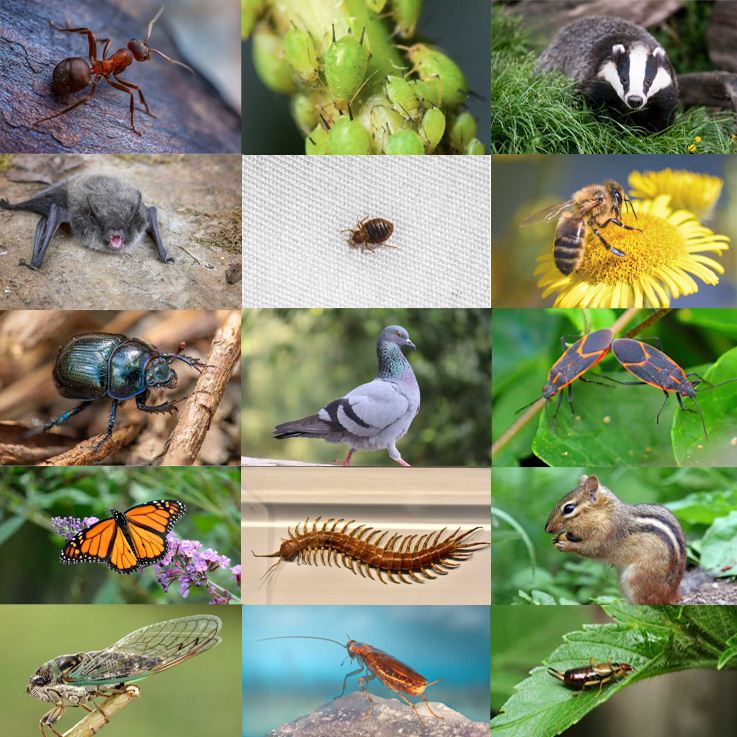
Do Carolina Wolf Spiders Bite?
Carolina wolf spiders (Hogna carolinensis) are capable of biting, but they are not generally aggressive towards humans and will typically only bite if they feel threatened or cornered. Their primary response to encountering a human is to flee rather than attack. If a Carolina wolf spider does bite, the bite is usually a defensive action, and it's not intended as a predatory bite, as they are not inclined to prey on humans.
The bite of a Carolina wolf spider is generally considered to be of low medical significance to humans. Their venom is not potent and typically causes only mild, localized symptoms. These may include:
- Mild Pain: The bite can cause mild pain, similar to a bee or wasp sting.
- Localized Swelling: There may be some swelling at the site of the bite.
- Redness: The area around the bite might become slightly red or inflamed.
- Itchiness: Itchiness can also occur, but it's usually mild and short-lived.
Serious allergic reactions to Carolina wolf spider bites are extremely rare, and severe systemic symptoms are not typically associated with their bites.
If you are bitten by a Carolina wolf spider and experience symptoms that are more severe than those described above, or if you have any concerns about the bite, it's advisable to seek medical attention. In most cases, however, a bite from a Carolina wolf spider is not a cause for significant medical concern.
As a general rule, it's best to avoid handling or provoking these spiders, as bites are more likely to occur if the spider feels threatened or cornered. Instead, if you encounter a Carolina wolf spider, it's best to observe it from a safe distance or gently encourage it to move away if it's indoors.

Hear From Our Happy Customers
-
"Fantastic & Patient"
Jarvis was fantastic and patient. He answered my questions with an in-depth explanation and addressed all of my areas of concern. Would love for him to be my assigned tech going forward. Well done!
- Yonnette M. -
"Very Knowledgeable"
The tech that arrived was courteous, professional, and very knowledgeable. He was Great.
- Uerial I. -
"Wonderful Service"
Wonderful service. Jarvis is great. Took care of everything I needed. Thank you!
- Henry P. -
"Professional & Considerate"
I’m pleased with Miche services. Jarvis came today. Professional and considerate. Thank you!
- Judy B. -
"Great Communication"
Tech was on time, communication was great, and he accommodated my needs.
- Alonzo W. -
"Exceeds Expectations"
I can’t say enough positive things about this company... The tech that came out, Jarvis went above and beyond my expectations. Thank you guys, I will continue using your services.
- Jake M.

